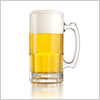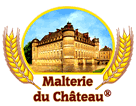Votre panier

 World: Big brewers expanding into low and no alcohol products but the boom looks relatively small
World: Big brewers expanding into low and no alcohol products but the boom looks relatively small
Big brewers are talking a good game on zero-alcohol beer. Carlsberg, Heineken, Anheuser-Busch InBev, Molson Coors, and Japan’s Asahi are expanding into low and no alcohol products, targeting an increasingly health-conscious consumer and the Gen Z generation. But the boom looks relatively small, and if it gets any bigger non-brewers may muscle in, Reuters reported on July 9.
The origins of low alcoholic beer can be traced to ancient Egypt. Around 5,000 BC, children, pregnant women and people from all social classes consumed a beverage that was similar to what is now known as beer, but which contained low amounts of alcohol. Because the brewing process tended to kill off harmful bacteria, it was seen as preferable to potentially polluted water.
Thousands of years later, health concerns are again driving zero alcohol demand. Consumers are becoming more conscious of their wellbeing, and consuming large quantities of alcohol no longer fits the bill. In a recent UK survey, opens new tab 36% of under-25s said they were non-drinkers. Just as tobacco groups have pivoted towards smokeless and no-nicotine products, brewers are now scrambling to retain relevance.
One topical upshot of this trend is Carlsberg’s decision to splurge $4.2 billion on soft drink and premium cocktail mixer Britvic. Brewers’ specific focus on low-alcohol beer goes back to 2017. Starting in that year Heineken and Budweiser owner AB InBev launched a variety of brands including Heineken 0.0, Corona Cero, and a zero-alcohol version of Leffe Blonde. Carlsberg has no-alcohol beer versions of Kronenbourg 1664 and Tuborg, too. Supermarket chains like Walmart, Tesco, and Carrefour have dedicated entire shelves to zero alcoholic beers, and bars now display a wide selection catering for teetotalers.
The pool of potential customers is expanding rapidly. From 2020 to 2023, the number of non-alcoholic beer drinkers in the U.S. increased from 0.6% of the adult population to 5.2%, according to a YouGov report, opens new tab. These drinkers are particularly lucrative. Four out of five non-alcoholic beer drinkers are under the age of 44 and nearly two-thirds have more than $1,000 in monthly disposable income.
For brewers, a new, expanding market comes at a good time. In the U.S. and Europe — their biggest markets — volumes are declining. Big Beer is also less profitable: Heineken in 2023 recorded an operating margin of just over 14.5%, a steep decline from the 17% it made before the pandemic, as the cost of raw materials and staff wages soared.
One catch is that brewers have to pay to play. Heineken USA spent $50 million on advertising in 2020 and gave away 10 million samples in its U.S. market. More recently, it has undertaken a Formula 1 sponsorship deal worth $300 million, opens new tab, which showcases its non-alcoholic beer.
The aggressive marketing is partly necessary because non-alcohol beers are a tough sell. Early consumers were put off by an unpleasant aftertaste, due to the need to heat the product to burn off the alcohol. Unfortunately, this also removed the natural hops flavour that lends beer its distinctive taste. In recent years brewers have ploughed money into research and development, which has made the products taste better.
The key hope for brewers is that a few years of high advertising spend will encourage consumers to switch to zero alcohol. If so, the real prize is that brewers could one day boost their margins. That’s because zero alcohol is often not subject to any alcohol taxes, which means brewers can charge a similar amount for a can of zero alcohol as they do for traditional beer and pocket the saving.
Take Heineken. Last year, opens new tab, the Dutch group paid around 6 billion euros of excise duties on its alcoholic beer. Those duties are charged due to environmental reasons and the energy used in the manufacturing process, as well as to tax alcohol. Imagine that over the long term the 42 billion euro beer maker can charge the same price for its zero-alcohol drinks and turn all its 242 million hectolitres of beer sales into duty-free no-alcohol fare. Even if it still paid two-thirds of its current excise duties, the brewer could add the 2 billion euros saved to the 3.2 billion euros of operating profit it made last year — a 63% increase.
Investors may already be betting on this future. Heineken, the market leader in zero alcohol, trades at nearly 18 times its expected earnings in 2025. By contrast AB InBev trades on only 15 times and Molson Coors is on just 8 times.
There are two main problems. One is that the low and no alcohol market, at $13 billion of sales, is still tiny compared to the $100 billion-plus of 2023 sales made by the three largest brewers. Another is that the party may soon become ever more crowded.
Although Coca-Cola and PepsiCo lack the necessary know-how to brew beer, there’s nothing stopping them buying a smaller brewer and competing with established beer makers. U.S. non-alcoholic beer company Athletic Brewing, last year estimated to be worth $500 million, is rapidly expanding in the domestic market and in 2023 signed a deal giving it sales access to 5,000 UK venues. London-based Lucky Saint is the fourth most popular non-alcoholic beer in the UK market, according to data from NIQ.
The more crowded the market becomes, the harder it will be for brewers to hit their targets. AB InBev set a goal of making 20% of its beer volume low and no alcohol by 2025, but in its 2023 annual report it said it would miss that target. Meanwhile, analysts query whether Japan’s Asahi can meet its lofty target of generating half of its sales from low and zero alcohol by 2040. Last year, these drinks accounted for only around 10% of sales.
The low-alcohol sector could yet ride to the rescue of brewers as and when alcohol consumption declines. But right now it’s not obvious this will happen quickly. And if it does, someone else may steal their pint.
Revenir
E-malt.com, the global information source for the brewing and malting industry professionals. The bi-weekly E-malt.com Newsletters feature latest industry news, statistics in graphs and tables, world barley and malt prices, and other relevant information. Click here to get full access to E-malt.com. If you are a Castle Malting client, you can get free access to E-malt.com website and publications. Contact us for more information at marketing@castlemalting.com .





